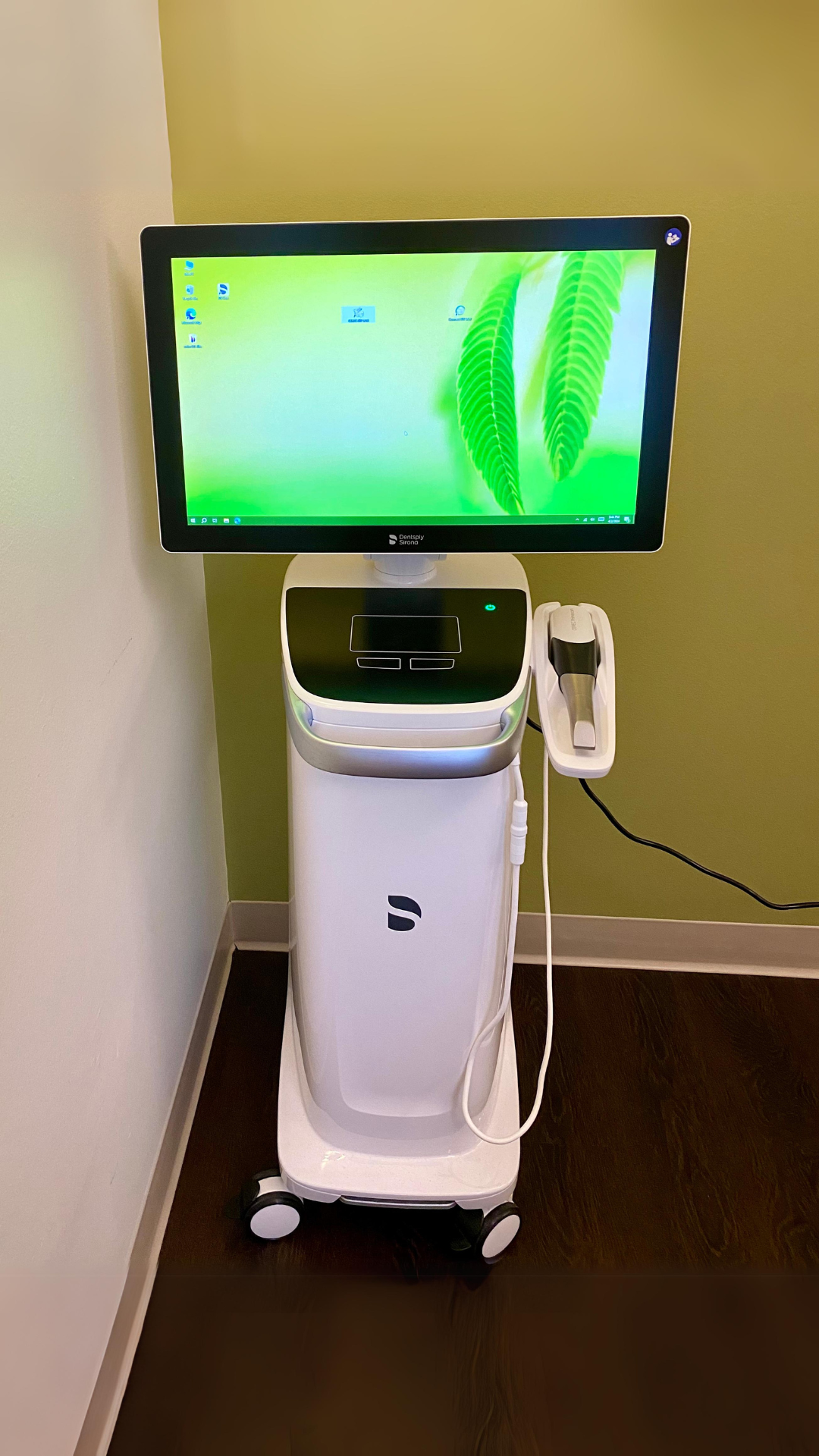What is a CEREC machine?
Posted by Amy Cooper Apr 02, 2024
A crown milling machine, also known as a dental milling machine, is a specialized piece of equipment used in dentistry to fabricate dental restorations such as crowns, bridges, and veneers. These machines utilize computer-aided design and computer-aided manufacturing (CAD/CAM) technology to precisely mill dental prostheses from various materials such as ceramics, metals, or composite resins. Dr. Cooper uses a CEREC crown milling machine to allow for prompt in house crown placement.Here's an overview of how a crown milling machine works:

1. Digital Scanning:
- The process begins with one of our assistants taking digital impressions of the patient's teeth using an intraoral scanner or a desktop scanner. These scanners create highly detailed 3D images of the patient's dental anatomy.
2. Design Phase:
- The digital impressions are then imported into CAD software, where the Dr. Cooper designs the restoration. Using advanced software tools, he can customize the shape, size, and contours of the restoration to precisely fit the patient's mouth.
3. CAM Programming:
- Once the design is finalized, the CAD software generates instructions for the milling machine using computer-aided manufacturing (CAM) programming. These instructions include the precise coordinates and toolpaths needed to mill the restoration from the chosen material.
4. Material Selection:
- Before milling begins, Dr.Cooper selects the appropriate material for the restoration based on factors such as strength, aesthetics, and compatibility with the patient's oral environment. Common materials used in dental milling include zirconia, lithium disilicate, and cobalt-chromium alloys.
5. Milling Process:
- The milling machine is equipped with specialized cutting tools, usually made of carbide or diamond, that rotate at high speeds to remove material from a solid block or puck of the chosen material.
- The milling machine follows the programmed toolpaths to precisely shape and carve the restoration according to the digital design.
- Throughout the milling process, Dr. Cooper and the assistants monitor the machine to ensure accuracy and quality control.
6. Finishing and Polishing:
- After milling is complete, the restoration may undergo additional finishing and polishing steps to refine the surface texture and achieve a natural appearance.
- Depending on the material used, the restoration may also undergo heat treatment or glazing to enhance its properties and aesthetics.
7. Quality Assurance:
- Once the restoration is finished, it undergoes inspection and quality assurance checks to ensure that it meets the required specifications for fit, function, and aesthetics.
- Any necessary adjustments or refinements can be made before the restoration is delivered to Dr. Cooper for final placement in the patient's mouth.
Overall, crown milling machines play a crucial role in modern dentistry by providing efficient, accurate, and customizable solutions for fabricating dental restorations that restore function and aesthetics to patients' smiles. Consider Dr. Cooper for quick, quality restorations!
More Blog Posts
Office Hours
MON9:00 am - 6:00 pm
TUE - THU8:00 am - 5:00 pm
FRI - SUNClosed
